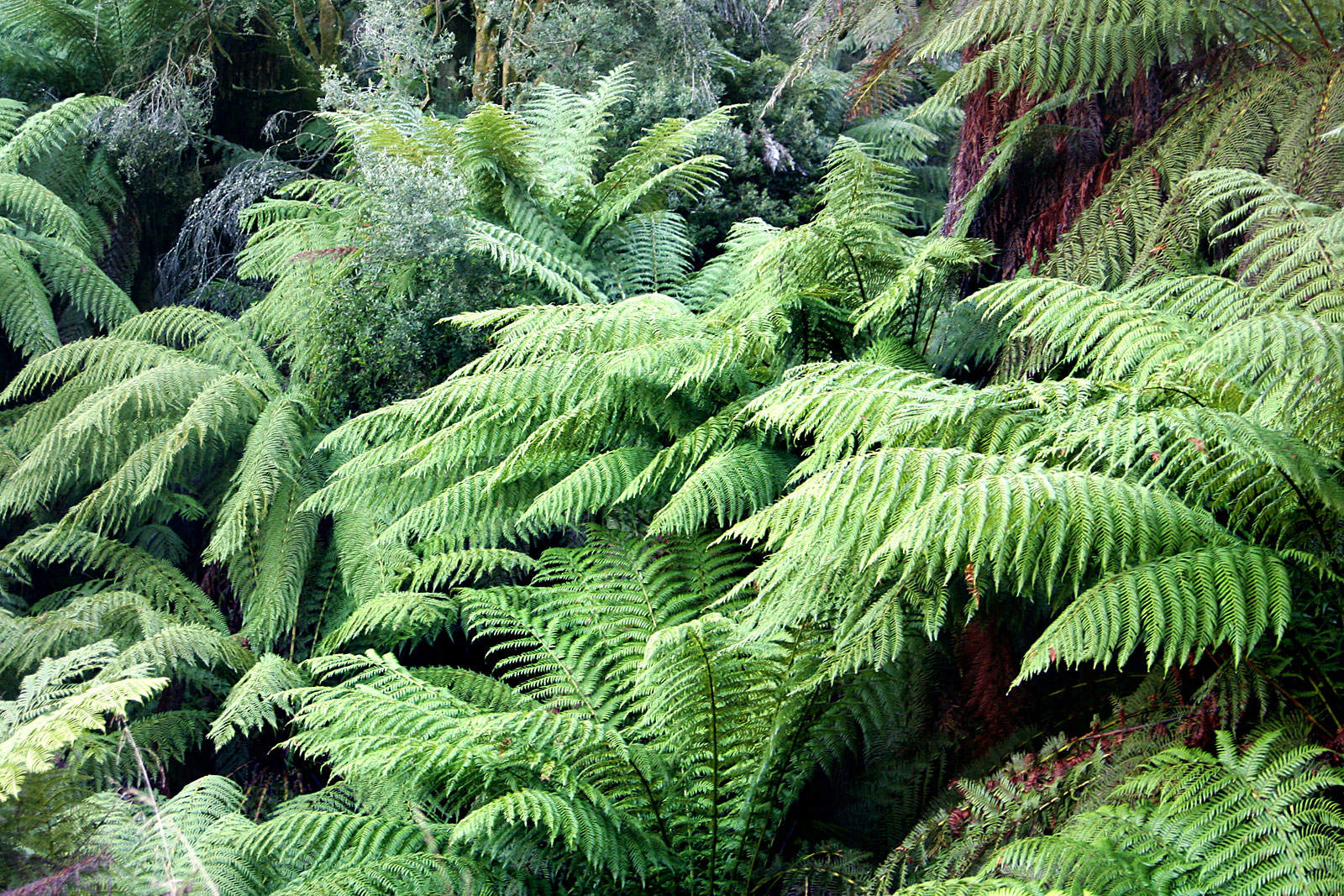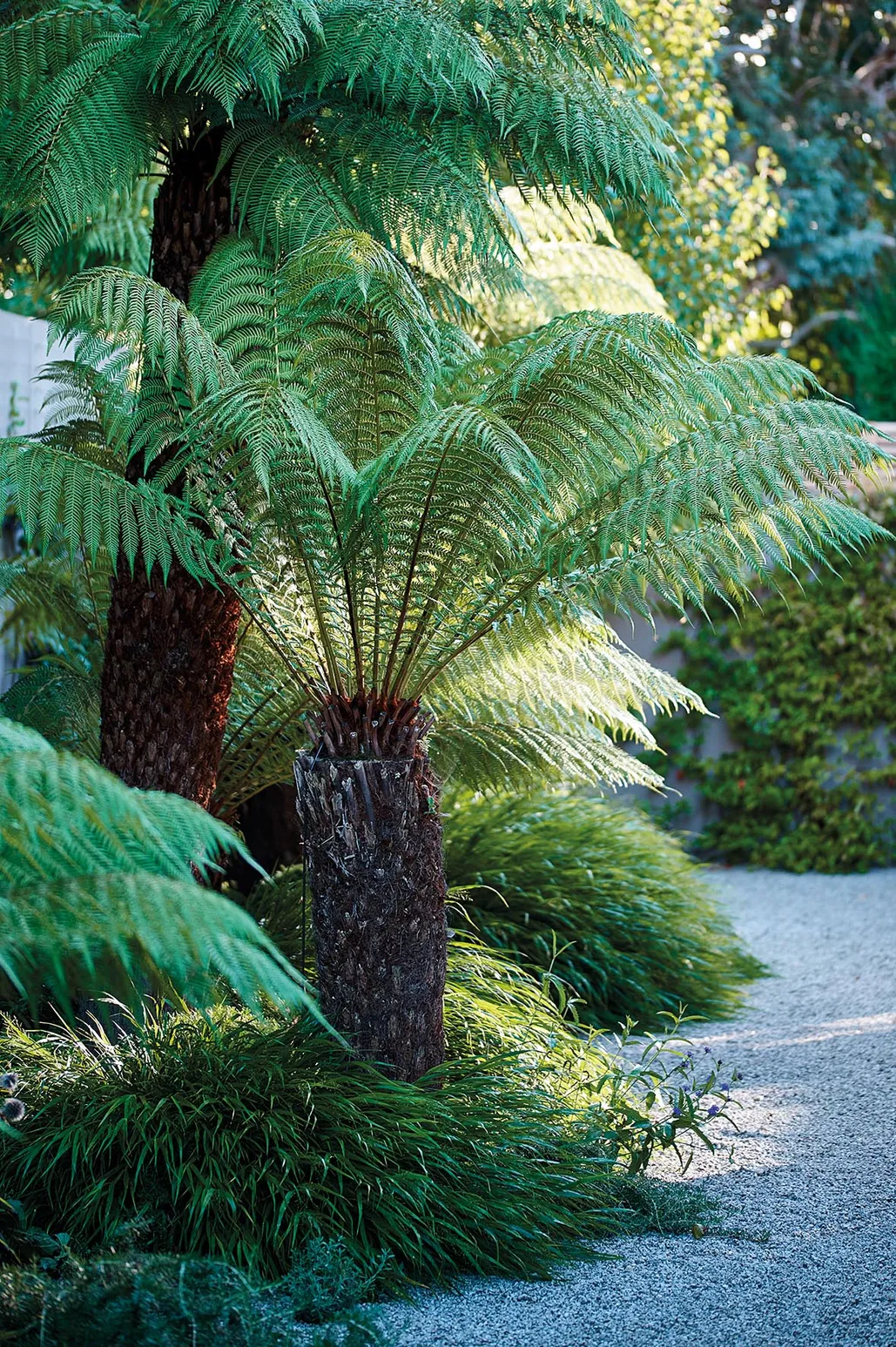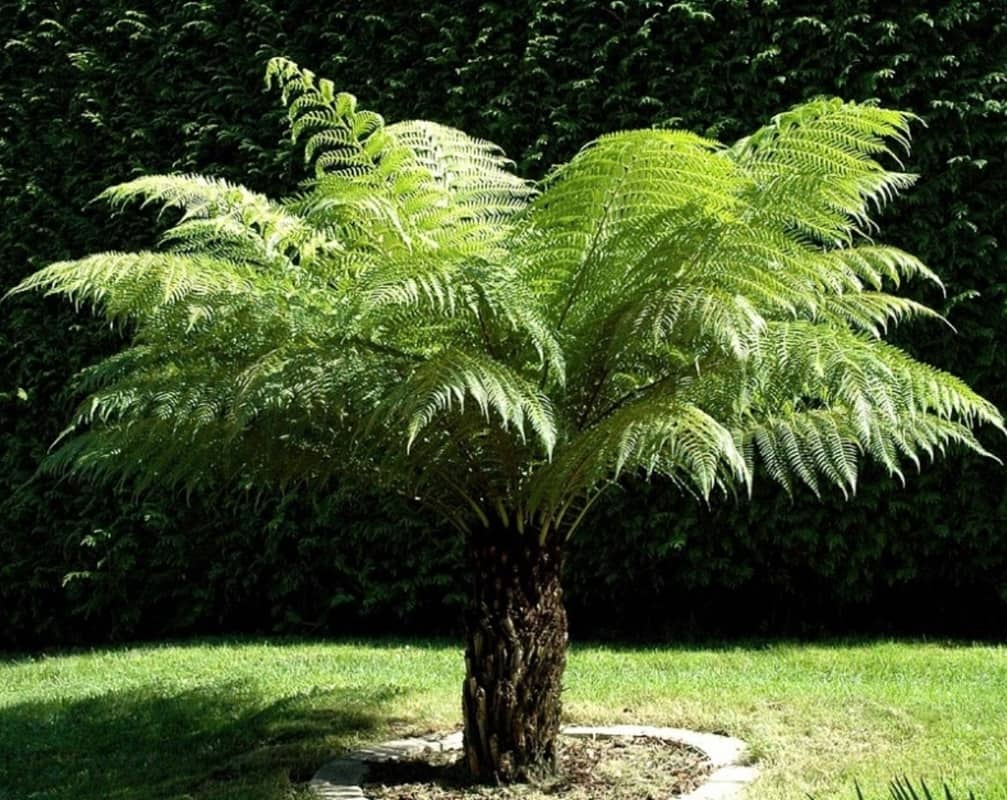Dicksonia is a genus of tree ferns, predominantly found in the Southern Hemisphere, particularly in Australia, New Zealand, and parts of South America. They are characterized by their tall, woody trunks and large, frond-like leaves, which can reach several meters in length. These ferns are ancient plants, with a fossil record dating back millions of years, making them living relics from the time of dinosaurs.
Let’s dive into the fascinating world of Dicksonia, exploring everything from their unique biology to how you can grow them in your own garden.
What Makes Dicksonia So Special?
Dicksonia tree ferns stand out for several reasons. Their most striking feature is their “trunk,” which isn’t a true woody stem like that of a tree. Instead, it’s a dense mass of fibrous roots, rhizomes, and the remains of old frond bases. This unique structure allows the fern to absorb and retain a significant amount of moisture, which is crucial for its survival in its often damp, humid natural habitat.

Another fascinating aspect is their slow growth rate. While they can eventually reach impressive heights, often topping out at 10-15 meters in the wild, this takes many decades, even centuries. This slow, steady growth contributes to their longevity, with some specimens estimated to be hundreds of years old.
The fronds of Dicksonia are typically large and bipinnate or tripinnate, meaning they are divided multiple times, giving them a delicate, feathery appearance. These fronds emerge from the crown of the trunk in a spiral pattern, unfurling gracefully as they mature. The undersides of the fronds often bear sori, which are clusters of sporangia containing spores – the fern’s method of reproduction.
A Journey Through Time: Dicksonia’s Ancient Roots
The history of Dicksonia is deeply intertwined with the ancient supercontinent of Gondwana. As Gondwana began to break apart millions of years ago, the ancestors of modern Dicksonia species were carried on the drifting landmasses, leading to their current distribution across Australia, New Zealand, and parts of South America.

Fossils of Dicksonia and related tree ferns have been found in various geological formations, providing valuable insights into the Earth’s past climates and ecosystems. These ancient ferns thrived in the warm, humid conditions that characterized much of the Mesozoic era, alongside dinosaurs and other prehistoric flora. Their resilience and ability to adapt have allowed them to persist to this day, making them living fossils that offer a glimpse into a world long gone.
Understanding their ancient lineage helps us appreciate their unique characteristics and the specific conditions they prefer. Their long evolutionary journey has equipped them with mechanisms to survive in environments that have seen dramatic changes over geological timescales.
Exploring the Diversity: Types of Dicksonia
While the genus Dicksonia encompasses several species, a few are particularly well-known and widely cultivated.

Dicksonia antarctica: The Most Famous Face
Perhaps the most iconic and widely recognized species is Dicksonia antarctica, commonly known as the soft tree fern or man fern. Native to southeastern Australia, including Tasmania, this species is renowned for its hardiness and ability to tolerate a wider range of conditions compared to some other tree ferns. Its trunk can grow quite stout, and its fronds can reach lengths of 2 to 6 meters, creating a magnificent, arching canopy.
Other Notable Dicksonia Species
While Dicksonia antarctica takes center stage, other species contribute to the diversity of the genus:
Dicksonia fibrosa: The Golden-Haired Beauty
Native to New Zealand, Dicksonia fibrosa, or the wheki-ponga, is distinguished by its golden-brown, hairy trunk and smaller, more upright fronds. It tends to be more compact than Dicksonia antarctica and is often found in higher altitudes in its native habitat. Its fibrous trunk is particularly noticeable, hence its common name.
Dicksonia squarrosa: The Harsh Tree Fern
Also from New Zealand, Dicksonia squarrosa, or the wheki, is known for its more slender, often blackish trunk and harsh, somewhat rigid fronds. It tends to grow in denser stands in its natural environment and is less frequently cultivated than Dicksonia antarctica or Dicksonia fibrosa due to its less ornamental appearance and specific growing requirements.
Dicksonia sellowiana: A South American Representative
Found in parts of South America, including Brazil and Argentina, Dicksonia sellowiana is another significant species. It shares many characteristics with its Australasian relatives, highlighting the ancient Gondwanan connections. Its fronds can be quite large, and it often grows in cloud forests, where humidity is consistently high.
The differences between these species, while sometimes subtle to the untrained eye, are crucial for botanists and horticulturists. Each species has adapted to slightly different environmental niches, influencing their preferred growing conditions and overall appearance.
Cultivating Dicksonia: Bringing the Tropics to Your Garden
Growing Dicksonia can be a rewarding experience, transforming your garden into a lush, prehistoric-inspired oasis. However, their specific needs require some attention to detail.
Location, Location, Location: Choosing the Right Spot
Dicksonia tree ferns thrive in cool, moist, and shady conditions. Direct sunlight, especially in hot climates, can scorch their fronds and lead to dehydration. A sheltered spot under a canopy of trees, on the north or east side of a building, or in a naturally damp, humid area of your garden is ideal. They also appreciate protection from strong winds, which can damage their delicate fronds.
Consider the mature size of the fern when selecting a location. While they grow slowly, they will eventually spread their fronds wide, so ensure there’s ample space for them to unfurl without obstruction.
The Right Soil Mix: Keeping Them Happy
Good drainage is essential, but Dicksonia also needs consistently moist soil. A rich, well-draining, and acidic to neutral soil mix is best. Incorporating plenty of organic matter, such as compost or well-rotted leaf mold, will help retain moisture while preventing waterlogging. Avoid heavy clay soils, which can suffocate the roots, and overly sandy soils, which drain too quickly.
Some growers even recommend planting them slightly above ground level in mounds to ensure excellent drainage, especially in areas with heavy rainfall.
Watering Wonders: The Key to Their Thriving
Consistent moisture is paramount for Dicksonia. Their fibrous trunks are designed to absorb and hold water, and they rely on this moisture to support their fronds and overall health. During dry periods, especially in summer, they will require regular watering. It’s not just the soil that needs water; the crown and the upper part of the trunk should also be kept moist, as this is where new fronds emerge and where the fern absorbs much of its water.
Many enthusiasts recommend “watering from above,” allowing water to trickle down the trunk, mimicking the natural rainfall they would experience in their native habitats. Overhead irrigation or a gentle spray can be very beneficial. In very hot or dry conditions, daily watering might be necessary. However, avoid letting them sit in standing water, as this can lead to root rot.
Feeding Frenzy: Nourishing Your Fern
While Dicksonia don’t require heavy feeding, a light application of a balanced, slow-release fertilizer or an organic feed can be beneficial during the growing season (spring and summer). Avoid high-nitrogen fertilizers, which can encourage lush but weak growth. Organic options like fish emulsion or seaweed extract are often preferred by tree fern growers. Some also find that mulching around the base of the fern with compost or well-rotted manure provides a steady supply of nutrients.
Protecting Your Precious Plant: Winter Care
In regions with cold winters, Dicksonia antarctica can tolerate some frost, but prolonged or severe freezing temperatures can damage the crown and fronds. In such areas, it’s advisable to protect the crown during winter. This can be done by packing it with straw, bracken, or fleece, and then wrapping the entire trunk in burlap or frost fleece. This insulation helps protect the vulnerable growing point from freezing. Once the danger of hard frost has passed in spring, the protective material can be removed. Smaller ferns can sometimes be moved indoors or to a sheltered porch for the winter.
Propagating Dicksonia: A Test of Patience
Propagating Dicksonia from spores is a slow and challenging process, primarily undertaken by specialist growers. The spores are collected from the undersides of mature fronds, typically in late summer or autumn. They are then sown on a sterile, moist substrate in a controlled environment. Germination can take many months, and the resulting sporophytes are tiny and delicate, requiring careful nurturing.
While theoretically possible, division of the trunk is generally not recommended due to the unique structure of the trunk and the high risk of damaging the plant. For most home gardeners, purchasing established young plants is the most practical way to acquire Dicksonia.
Common Challenges and Solutions
Even with the best care, Dicksonia can sometimes face challenges.
Frond Browning: What’s Going Wrong?
Browning fronds are a common issue and usually indicate a lack of moisture or too much sun exposure. If the fronds are turning brown and crispy, increase watering, particularly to the crown and trunk. If the plant is in direct sun, consider moving it to a shadier location or providing some shade with a shade cloth. Occasionally, nutrient deficiencies can also contribute to browning, in which case a light feed might help.
Pests and Diseases: Keeping an Eye Out
Dicksonia are generally resistant to most pests and diseases. However, they can occasionally be affected by scale insects or mealybugs, especially in indoor or sheltered environments. These can be wiped off with a damp cloth or treated with an insecticidal soap. Fungal issues are rare but can occur if the plant is consistently waterlogged. Ensuring good air circulation and proper drainage can help prevent such problems.
Slow Growth: Is This Normal?
Yes, very slow growth is entirely normal for Dicksonia. These are plants that operate on a geological timescale! Don’t expect rapid increases in height. Patience is key when growing tree ferns. Focus on providing consistent care, and you will be rewarded with a healthy, slowly developing specimen.
Environmental Importance: Dicksonia in the Ecosystem
Beyond their ornamental appeal, Dicksonia tree ferns play a crucial role in their native ecosystems. They contribute to the biodiversity of forests, providing habitat and shelter for various small animals, insects, and other plant species that grow epiphytically on their trunks. Their dense canopies also create microclimates, maintaining humidity levels and influencing the overall forest structure.
In their natural habitats, they are indicators of healthy, undisturbed forest ecosystems. Their presence often signifies a high level of biodiversity and a stable environment. The preservation of these ancient plants and their habitats is vital for maintaining ecological balance.
Conclusion
Dicksonia tree ferns are more than just beautiful garden plants; they are living testaments to an ancient past, embodying resilience and natural elegance. Their unique biology, slow growth, and majestic presence make them a captivating addition to any garden or landscape, particularly in temperate and subtropical climates. By understanding their specific needs for shade, consistent moisture, and protection from harsh conditions, you can cultivate these magnificent living fossils and enjoy their serene beauty for many years to come. Their ability to transport us to a primeval world, coupled with their ecological significance, makes them truly remarkable members of the plant kingdom.
5 Unique FAQs After The Conclusion
1. Can Dicksonia tree ferns survive in very cold climates with harsh winters and heavy snow?
While Dicksonia antarctica has some frost tolerance, very cold climates with prolonged, severe freezing temperatures and heavy snow are generally not suitable for outdoor cultivation. The crown, which is the growing point, is particularly vulnerable to freezing. In such regions, it’s highly recommended to grow them in large pots that can be moved indoors to a cool, bright, and frost-free location during winter, or to provide substantial winter protection as described in the article. For instance, in USDA Hardiness Zone 7 and below, significant winter protection is usually necessary.
2. Is it possible to grow Dicksonia tree ferns from a piece of the trunk, similar to how some trees can be propagated from cuttings?
No, you cannot propagate Dicksonia tree ferns from a piece of their “trunk” in the same way you would propagate a woody tree from a cutting. The trunk of a Dicksonia is not a true woody stem but rather a dense mass of roots, rhizomes, and old frond bases. Cutting a section of the trunk will almost certainly kill the plant as it disrupts its entire vascular system and growing point. Propagation is primarily done through spores, which is a specialized and time-consuming process.
3. Do Dicksonia tree ferns produce flowers or cones, or do they reproduce in a different way entirely?
Dicksonia tree ferns do not produce flowers or cones because they are not flowering plants (angiosperms) or conifers (gymnosperms). As ferns, they reproduce via spores. These spores are typically found in clusters called sori on the undersides of their mature fronds. When the spores are released, they germinate to form a small, heart-shaped gametophyte, which then produces the sporophyte (the recognizable fern plant). This ancient reproductive method predates the evolution of flowers and seeds.
4. How long does it typically take for a Dicksonia tree fern to grow from a small potted plant to a significant size (e.g., 2-3 meters tall)?
Due to their extremely slow growth rate, it can take a very long time for a small potted Dicksonia tree fern to reach a significant height of 2-3 meters. Generally, you can expect Dicksonia antarctica to grow only about 2.5 to 5 centimeters (1 to 2 inches) in trunk height per year, even under optimal conditions. Therefore, a fern might take 40 to 120 years or more to reach 2-3 meters, making them a true long-term garden investment.
5. Are there any specific companion plants that grow well with Dicksonia tree ferns and enhance their natural aesthetic?
Yes, many plants thrive in similar conditions and can beautifully complement Dicksonia tree ferns, enhancing their natural aesthetic. Ideal companion plants include other shade-loving and moisture-loving species such as hostas, hydrangeas, rhododendrons, camellias, and various shade-tolerant groundcovers like hellebores or ivy. Additionally, other ferns (like the Japanese painted fern or maidenhair fern), mosses, and epiphytic plants (if you’re in a very humid climate) can create a lush, naturalistic understory that mimics their native forest environments.

